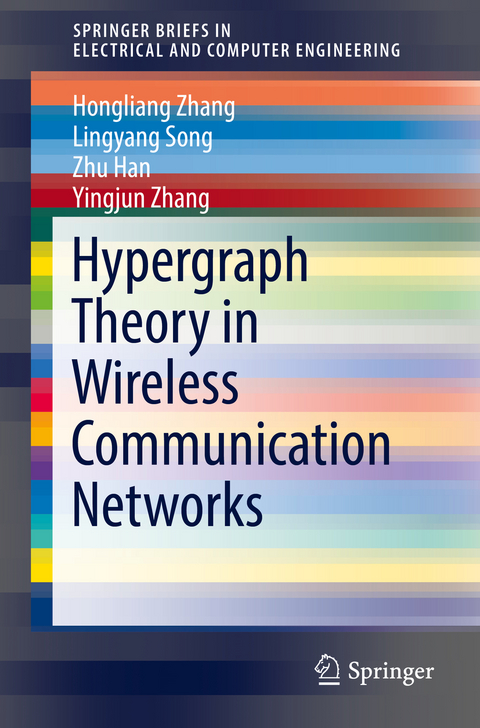
Hypergraph Theory in Wireless Communication Networks
Springer International Publishing (Verlag)
9783319604671 (ISBN)
This brief focuses on introducing a novel mathematical framework, referred as hypergraph theory, to model and solve the multiple interferer scenarios for future wireless communication networks. First, in Chap. 1, the authors introduce the basic preliminaries of hypergraph theory in general, and develop two hypergraph based polynomial algorithms, i.e., hypergraph coloring and hypergraph clustering. Then, in Chaps. 2 and 3, the authors present two emerging applications of hypergraph coloring and hypergraph clustering in Device-to-Device (D2D) underlay communication networks, respectively, in order to show the advantages of hypergraph theory compared with the traditional graph theory. Finally, in Chap. 4, the authors discuss the limitations of using hypergraph theory in future wireless networks and briefly present some other potential applications.
This brief introduces the state-of-the-art research on the hypergraph theory and its applications in wireless communications. Anefficient framework is provided for the researchers, professionals and advanced level students who are interested in the radio resource allocation in the heterogeneous networks to solve the resource allocation and interference management problems.
Basics in Hypergraph Theory.- Key Algorithms.- Applications of Hypergraph Theory.- Conclusions and Future Works.
"The book is interesting, even for readers not involved in wireless networks research. It shows a systematic approach to the application of mathematical concepts and theories in telecommunications and information technology. The ideas raised are thought-provoking, and the approach may be customized for other fields, that is, mapping concepts onto hypergraphs, defining weights or other evaluation functions, and so on, thereby offering fruitful research directions." (Bálint Molnár, Computing Reviews, January, 2019)
“The book is interesting, even for readers not involved in wireless networks research. It shows a systematic approach to the application of mathematical concepts and theories in telecommunications and information technology. The ideas raised are thought-provoking, and the approach may be customized for other fields, that is, mapping concepts onto hypergraphs, defining weights or other evaluation functions, and so on, thereby offering fruitful research directions.” (Bálint Molnár, Computing Reviews, January, 2019)
| Erscheinungsdatum | 23.08.2017 |
|---|---|
| Reihe/Serie | SpringerBriefs in Electrical and Computer Engineering |
| Zusatzinfo | IX, 62 p. 26 illus., 14 illus. in color. |
| Verlagsort | Cham |
| Sprache | englisch |
| Maße | 155 x 235 mm |
| Gewicht | 129 g |
| Themenwelt | Mathematik / Informatik ► Informatik ► Netzwerke |
| Mathematik / Informatik ► Mathematik ► Graphentheorie | |
| Technik ► Elektrotechnik / Energietechnik | |
| Technik ► Nachrichtentechnik | |
| Schlagworte | combinatorics & graph theory • Combinatorics & graph theory • Communications Engineering, Networks • Communications engineering / telecommunications • Computer Communication Networks • Device to Device communications • Engineering • Engineering: general • future wireless systems • graph theory • Heterogeneous communication networks • Hypergraph clustering • Hypergraph coloring • hypergraph theory • network hardware • Radio Resource Management |
| ISBN-13 | 9783319604671 / 9783319604671 |
| Zustand | Neuware |
| Informationen gemäß Produktsicherheitsverordnung (GPSR) | |
| Haben Sie eine Frage zum Produkt? |
aus dem Bereich


